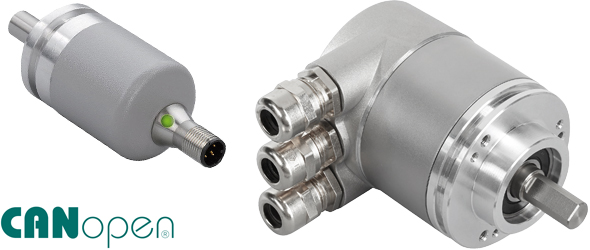
CANopen Encoder and Inclinometer Interface

CANopen Characteristics
The data communication is done via message telegrams. In general, telegrams can be split in a COB-Identifier and up to 8 following bytes. The COB-Identifier, which determines the priority of the message, is made from the function code and the node number. The node number is uniquely assigned to each user.
IXARC Absolute Encoder with CANopen Video Manual
Controller Area Network
CAN stands for Controller Area Network and was developed by the company Bosch for applications within the automobile area. In the meantime CAN has become increasingly used for industrial applications. CAN is a multi-masterable system, i.e. all users can access the bus at any time as long as it is free. CAN doesn't operate with addresses but with message identifiers.
Bus Access
Access to the bus is performed according to the CSMA/CA principle (carrier sense multiple access with collision avoidance), i.e. each user listens if the bus is free, and if so, is allowed to send messages. If two users attempt to access the bus simultaneously, the one with the highest priority (lowest identifier) receives the permission to send. Users with lower priority interrupt their data transfer and will access the bus when it is free again. Messages can be received by every participant. Controlled by an acceptance filter the participant accepts only messages that are intended for it. POSITAL rotary encoders support two CAN protocols: CANopen and DeviceNet.
Supported Telegram Types
With a POSITAL rotary encoder this number is assigned with by numerical coded turn switches in the connection cap. The function code varies according to the type of message transmitted: PDOs (Process Data Objects) are needed for real time data exchange. Since this messages possess a high priority, the function code and therefore the identifier are low. SDOs (service data objects) are necessary for the bus node configuration (e.g. transfer of device parameters). Because these message telegrams are tranferred acyclicly (usually only while powering up the network), the priority is low.
